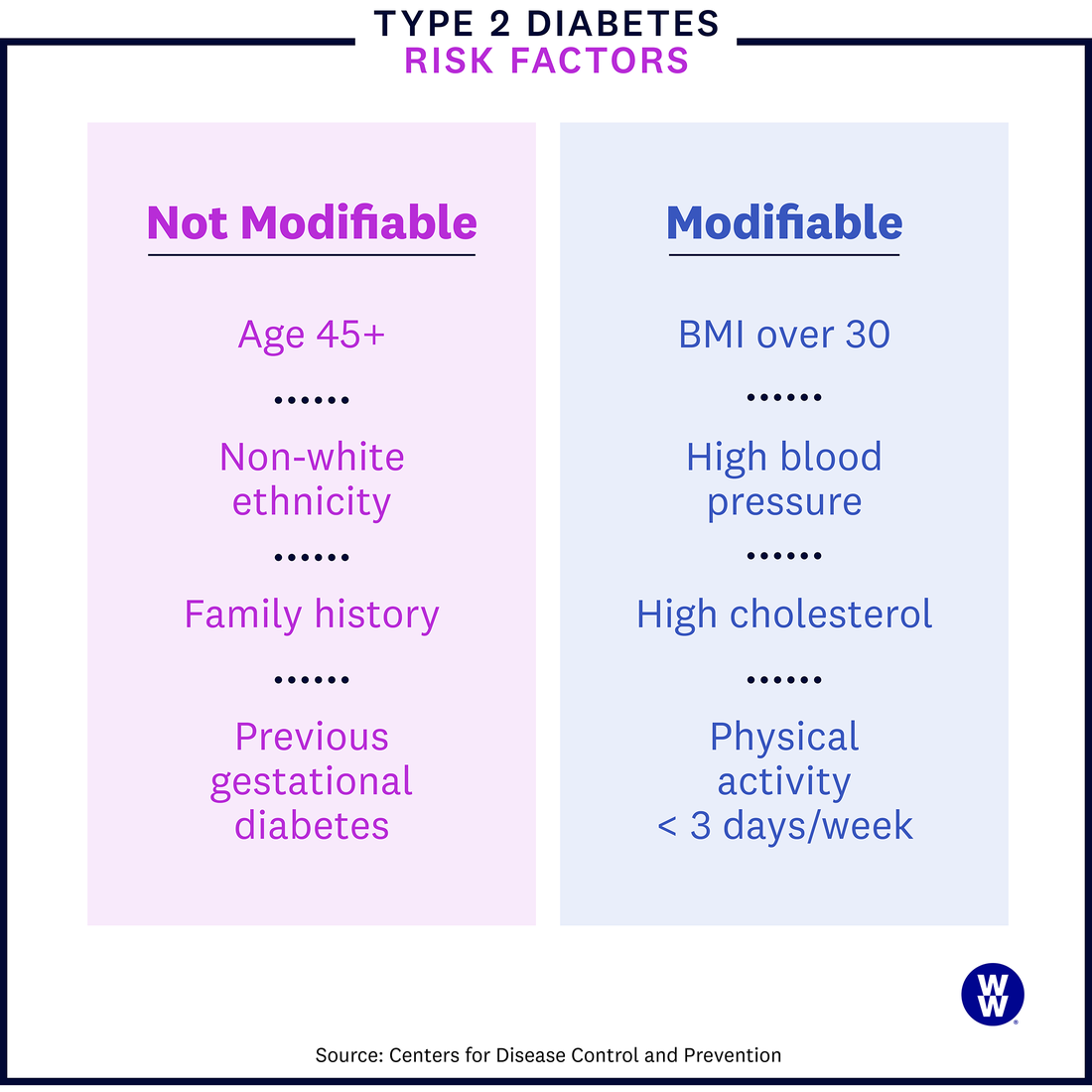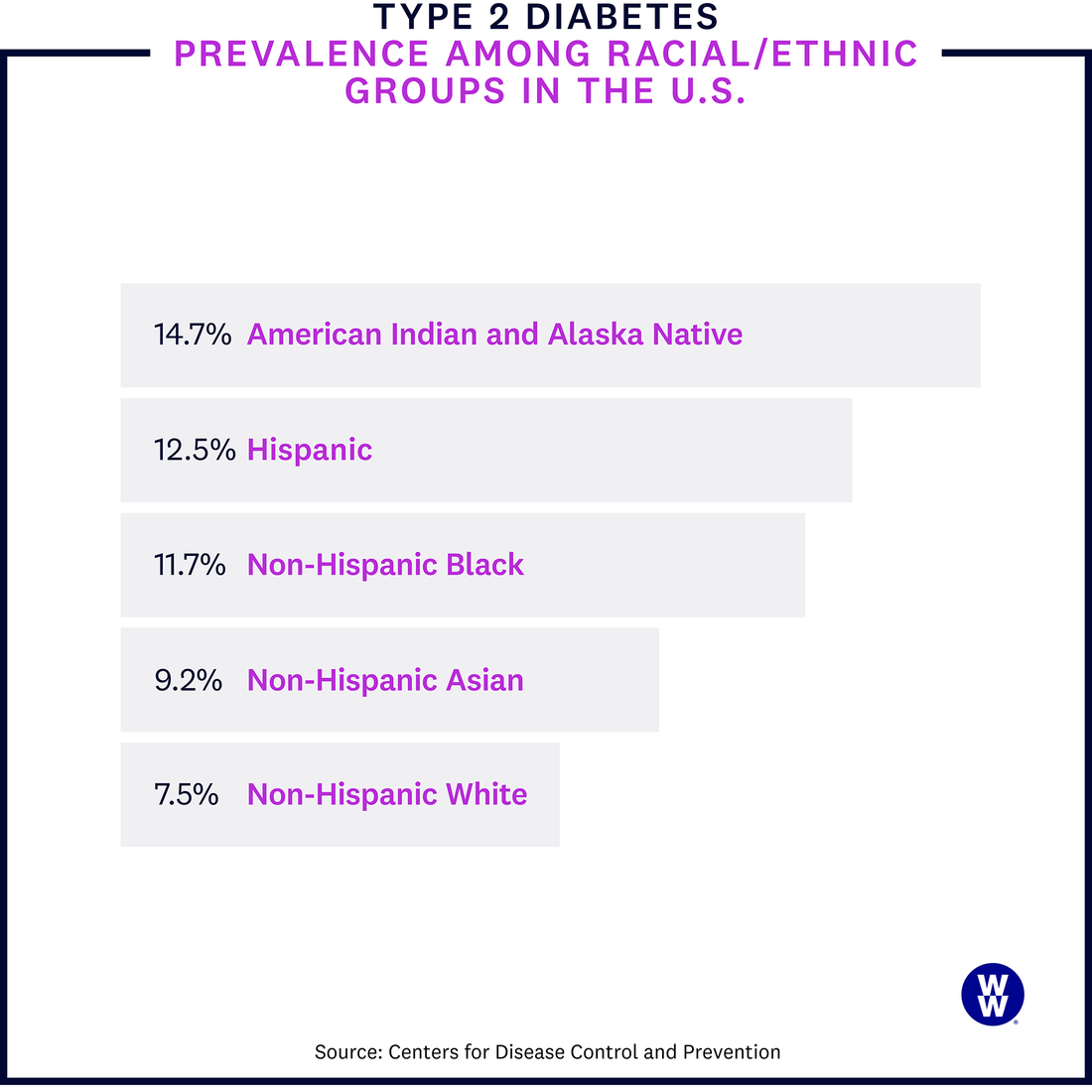The Most Important Things to Know About the Causes of Diabetes


What causes type 1 diabetes?
Sometimes referred to as juvenile diabetes, type 1 diabetes (T1D) was thought to surface only in childhood. Researchers now know it can develop in people of all ages. An analysis published in The Lancet (which was limited to individuals of white European descent in the UK) found that 42% of those living with T1D were diagnosed after age 30.
A lifelong autoimmune disease, T1D strikes when the body’s immune system basically does a 180 on itself, attacking and destroying cells in the pancreas that produce insulin, a hormone needed to lower the amount of sugar in your bloodstream. As a result, the body ends up with too little insulin and too much blood sugar.
“Because the immune system destroys these insulin-producing cells in the pancreas, the pancreas can’t produce insulin, which means that patients become dependent on insulin therapy to remain healthy,” says Dr. Tom Donner, M.D., an associate professor of medicine and the director of the Johns Hopkins Diabetes Center, in Baltimore.
Type 1 diabetes is largely believed to be the result of genetics and environmental factors that aren’t yet understood. We know people can be genetically predisposed to T1D, but we’re not sure why the disease is triggered in some people with the predisposition and not others, says Dr. Jane Reusch, M.D., a professor of medicine, bioengineering, and biochemistry and the associate director of the Ludeman Family Center for Women’s Health Research at the University of Colorado, in Aurora. That’s what leads many experts to surmise that environmental factors play a part.
What raises your risk of type 1 diabetes?
Scientists believe family history (i.e., you have a parent or sibling who has the disease) is the biggest risk factor. According to the American Diabetes Association, if both parents have T1D, a child’s risk is between 1 in 10 and 1 in 4.
Increasingly, researchers are learning about other potential contributing risk factors for type 1 diabetes, including higher maternal age at birth (defined as over 35), childhood obesity, higher-sugar diets, and viral infections either in utero or very early on in childhood. Geography is also thought to play a role. It’s unclear why, but studies show those living at higher latitudes are more likely to have T1D; Finland consistently reports the highest incidence rate of T1D in the world.
Although T1D can appear at any age, in childhood, it tends to peak at two distinct times: between ages 4 and 7 and between ages 10 and 14.
What causes type 2 diabetes?
Unlike T1D, people with type 2 diabetes (T2D) do make some insulin, but their bodies can’t use it properly. People with type 2 diabetes also tend to be insulin-resistant, meaning the body thwarts insulin from doing its job of moving glucose from the bloodstream and into cells, providing them with the energy to fuel the body. Because glucose gets stuck in your blood, it causes high blood sugar. This is all coupled with a decreased ability to produce insulin overall.
The most common form of diabetes, T2D affects up to 95% of those with diabetes. T2D is caused by a combo of genetics and lifestyle factors, including having excess weight or obesity and a lack of physical activity. Studies show there is a clear link between T2D and obesity, as obesity can cause insulin resistance.
How do weight, diet, and exercise level impact your risk of type 2 diabetes?
If there’s one thing researchers know about the environmental factors that can contribute to developing T2D, having excess weight, a poor diet, and not moving enough are the main offenders. “Following a healthy eating plan, losing excess weight, and getting in regular physical activity can help improve insulin sensitivity and blood sugar control,” says Barbra Sassower, RDN, a registered dietitian nutritionist and the certified diabetes educator at WW. And the good news is these are all things you can control. Here’s a closer look at how these factors play a part.
Weight
Excess weight—i.e., a body mass index (BMI) of 30 or above—is the fastest route to T2D. Here’s why: When you’re carrying extra pounds, glucose can’t get into cells as easily, which causes insulin resistance, a proven risk factor for type 2 diabetes.
Where you carry the weight matters too. Extra body fat, particularly in your belly, can contribute to insulin resistance. Known as visceral fat, this is the type of fat you can’t see because it surrounds internal organs and causes inflammation throughout your body.
Diet
A diet that’s high in sugar and saturated fat can lead to excess weight, which can then lead to type 2 diabetes. But these saboteurs can also directly drive up your risk of T2D by negatively impacting insulin, Sassower says. The American Diabetes Association recommends a diet that includes:
- Fruits and vegetables
- Whole grains (like brown rice and whole-grain bread)
- Skinless poultry
- Fish
- Legumes (like lentils and chickpeas)
- Non-tropical vegetable oils (like olive, not coconut)
- Unsalted nuts and seeds
In addition, the American Heart Association offers these guidelines:
- Avoid trans fats (listed under saturated fat on food labels).
- Reduce cholesterol level and salt intake.
- Limit added sugar, red meat, and refined carbs.
Exercise
Working out less than three times a week has been shown to increase your risk of T2D because, according to studies and guidelines from the American Heart Association, at least 150 minutes of exercise per week is needed to help control blood sugar. But! That workout can be any activity that gets you moving: walking, doing chores, keeping up with a small child—anything!


How do other health conditions impact your type 2 diabetes risk?
Suffering from high blood pressure (hypertension) and high cholesterol (especially in those who have high triglyceride levels) increases your chances of developing type 2 diabetes. “This combination of conditions is called metabolic syndrome; all the components of metabolic syndrome also put you at increased risks of heart disease and strokes,” Donner says.
That said, modest weight loss, eating healthier foods, and upping your exercise can lower the risk of all these conditions. (Just 30 minutes of moderate-intensity physical activity daily reduces the risk of developing type 2 diabetes by 58%.)
Blood pressure
Also known as hypertension, high blood pressure not only stresses the heart but also tends to co-occur in those with diabetes. Research shows the prevalence of hypertension is two times more likely in people with diabetes. Plus, those with hypertension are more likely to experience insulin resistance, and therefore diabetes as well.
Cholesterol levels
Low levels of HDL cholesterol—sometimes called good cholesterol—and/or high levels of triglycerides can increase the risks of type 2 diabetes and cardiovascular disease by directly impacting blood sugar levels.
How health disparities impact type 2 diabetes risk
Researchers have found that certain racial and ethnic groups and those in a low income bracket face powerful inequities when it comes to social determinants of health, which puts them at a greater risk of developing T2D. For example, according to the Office of Minority Health at the U.S. Department of Health and Human Services, Black adults in the U.S. are 60% more likely than white adults to be diagnosed with diabetes and they are twice as likely to die from the disease.

Tell Me More About... Diabetes and Inequities
Q: Why are minority populations more likely to develop diabetes?
A: There are so many systemic factors at play that make minority groups more prone to diabetes—from genetics to a lack of walkability in neighborhoods that are primarily BIPOC (Black, Indigenous, and people of color) to decreased access to quality care and a dearth of healthy food options. This last factor is sometimes referred to as food apartheid, and it’s essentially a lack of agency over the food available within a community and a preponderance of fast food. Ultimately, these forces can lead to having excess weight or obesity, as well as other risk factors for diabetes, says Donner.
Q: Do those factors increase the risk of complications from diabetes too?
A: Unfortunately, yes. T2D tends to develop at an earlier age in many minority populations, and it’s often less controlled, which can lead to other issues. “Complications like kidney disease are more common in racial and ethnic minority patients with diabetes,” Donner says. Why? It’s harder to get the right care. Screenings for complications are performed less frequently, due to lower rates of healthcare coverage and also less support from the healthcare system. When it comes to the prevention and diagnosis of diabetes, the National Healthcare Quality and Disparities Report (by the Agency for Healthcare Research and Quality at the U.S. Department of Health and Human Services) found that white patients receive more access and a higher quality of care than any and all minority groups.
Q: Can where you live affect your diabetes risk?
A: Our environment profoundly affects our health, and that applies to diabetes. If you live somewhere without access to safe recreational areas or to healthcare providers, as is the case in rural and urban communities alike, you’re more likely to develop health conditions like diabetes. Plus, says Donner, you will often be diagnosed with diabetes at later stages. Meaning: You can develop diabetes complications even before you are diagnosed.


Is prediabetes caused by the same factors as type 2 diabetes?
Prediabetes basically means your blood sugar is higher than normal, but not high enough to merit a diabetes diagnosis. A fasting blood sugar level of 100 to 125 mg/dl (milligrams per deciliter) indicates you have prediabetes, while 126 and above indicate diabetes. Like type 2 diabetes, the specific cause of prediabetes is not well understood, but genetics, excess weight (especially around the belly), and lack of activity play a role. Risk factors are the same as with T2D: family history, race, age, living with excess weight or obesity, a lack of activity, and a history of other conditions like high blood pressure, high cholesterol, and cardiovascular disease.
What causes gestational diabetes?
Gestational diabetes is a type of diabetes that is unique to pregnancy, affecting nearly 10% of pregnant individuals each year. Researchers suspect it develops due to a mix of hormonal and genetic factors.
For starters, the placenta produces hormones like estrogen and cortisol that can block the work of insulin—carrying sugar from the bloodstream to the cells—resulting in insulin resistance.
While pretty much everyone develops a degree of insulin resistance during pregnancy, the pancreas makes up for it in most cases by churning out more and more insulin. When that’s not enough, though, the blood sugar tide rises and rises and gestational diabetes sets in.
Somewhat unsurprisingly, this tends to happen as the placenta grows and its hormone production scales, says Nicole Lynch, an advanced practice registered nurse at the Utah Diabetes & Endocrinology Center at the University of Utah, in Salt Lake City.
The good news is that “once the placenta is delivered, the person does not experience this resistance any longer and the diabetes goes away,” Lynch says.
It’s worth noting, however, that having gestational diabetes does increase your risk of T2D— nearly half the number of women with gestational diabetes go on to develop T2D later in life. (Though your risk of T2D increases with age regardless of gestational diabetes.)
What raises your risk of gestational diabetes?
In addition to hormones and genetics, there are some other factors that can make you more susceptible to the condition.
- Previous gestational diabetes
While gestational diabetes disappears after the baby is delivered, it does up your chances (significantly) of getting it again during future pregnancies. In fact, studies show you are nearly 50% more likely to get gestational diabetes again.
- Having a big baby
Previously giving birth to a baby weighing more than nine pounds increases the chances of developing gestational diabetes during future pregnancies. This is because delivering a larger baby—known as a macrosomic infant—is a sign of insulin resistance, Lynch says.
- Excess weight or obesity
Having excess weight or obesity prior to pregnancy can increase your risk of gestational diabetes. Studies show age heightens those risks. The older you are and the higher your pre-pregnancy BMI, the greater your chances of developing the condition.
- An age of 25 years or older
The older you are, the harder your pancreas has worked over time. So its ability to keep up with your insulin needs during pregnancy may be diminished.
- Family history of type 2 diabetes
If a parent or sibling has T2D, you’re automatically predisposed to diabetes, including gestational diabetes. Not the news you want to hear, but be assured, predisposition alone is rarely accountable for a diabetes diagnosis. Lifestyle factors are also a major influence. (More on that in a minute.)
- Polycystic ovary syndrome (PCOS)
According to the Centers for Disease Control and Prevention, as many as 5 million U.S. women of reproductive age are affected by polycystic ovary syndrome (PCOS), a condition in which the ovaries produce an abnormal amount of androgens, which can lead to insulin resistance. As many as 40% of those with PCOS are also insulin-resistant. This can spur elevated blood glucose levels that can lead to gestational diabetes, prediabetes, and T2D.
- Socioeconomic status
Lower-income individuals are more likely to live in under-resourced neighborhoods. Within these communities, social determinants—such as poverty, lack of access to healthy food, restrictions on safe physical activity, inadequate employment, and limited educational opportunities—can result in a variety of negative health outcomes, including an increased chance of developing gestational diabetes and T2D.
- Race
People in marginalized racial and ethnic communities (including African American, Alaska Native, American Indian, Asian American, Hispanic and Latinx, Native Hawaiian, and Pacific Islander) are most affected by gestational diabetes (as well as T2D). Research indicates that this is largely due to decreased access to health-related resources (like medical insurance), increased stress, and lower socioeconomic status more likely impacting under-resourced communities.
